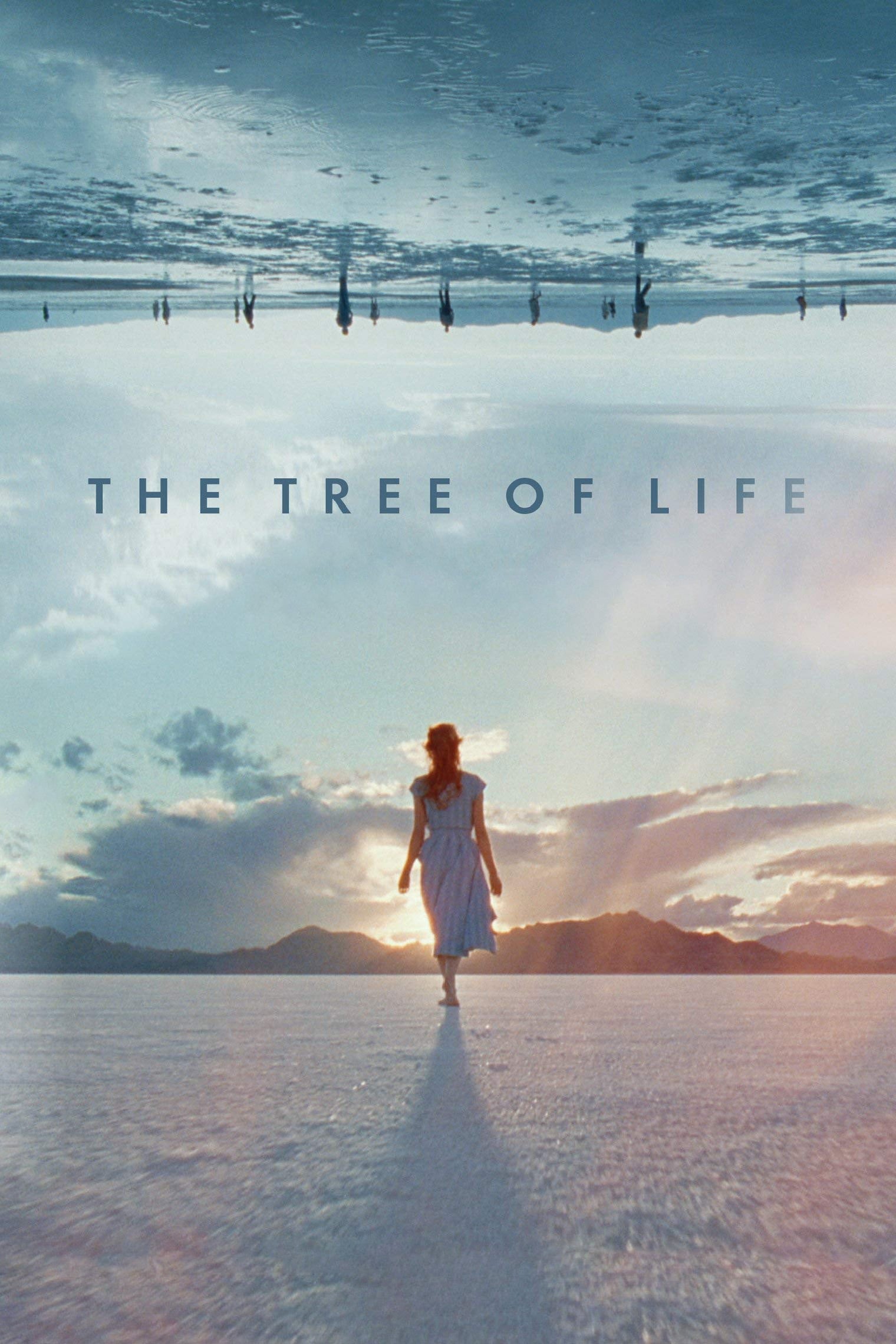Spoilers:
- Jack’s brother dies tragically young.
- The family struggles with grief.
- Young Jack clashes with his father.
- Existential questions about life and God.
- Scenes jump from past to cosmic imagery.
The Tree of Life: Statistics
Basic Information
- Title: The Tree of Life
- Release Date: May 16, 2011 (Cannes Film Festival), May 27, 2011 (United States)
- Genre: Drama, Fantasy
- Director: Terrence Malick
- Screenplay: Terrence Malick
Cast
- Brad Pitt as Mr. O’Brien
- Jessica Chastain as Mrs. O’Brien
- Sean Penn as Jack
- Hunter McCracken as Young Jack
Box Office
- Budget: $32 million
- Box Office: $61.7 million
Awards
- Palme d’Or at Cannes Film Festival 2011
- Nominated for 3 Academy Awards – Best Picture, Best Director, Best Cinematography
Critical Reception
- Rotten Tomatoes: 85%
- Metacritic: 85/100
- IMDb: 6.8/10
“The Tree of Life,” by Terrence Malick is a profound exploration of the human condition, profoundness of existence and the infinite expanses of time. It is a film that precisely embodies the philosophical and theological debates on life and existence. Malick’s distinct storytelling style elicits deep introspection, delivering a potent emotional punch that leaves audiences reflecting on their own lives.Undoubtedly, the narrative’s brilliance lies within its ability to juxtapose cosmic events with everyday human life. As the narrative unfolds, it maneuvers from the birth of the universe to a 1950s American family, revealing a universe brimming with life and emotional intimacy. It is a provocation of thought, interlacing metaphysics and reality, prompting one to contemplate the mysteries of life and the universe.The film provokes with its daring exploration of life’s dichotomies; grace and nature, faith and reason, innocence and experience. Its visual poetry narrates the nuanced yet compelling “battle” between the mother’s endless grace and the father’s tyrannical nature.Malick’s masterful filmography, coupled with a profound narrative, allows us to intuit knowledge about life and its imperfections. His acute perception of life’s dynamics fuels the depth of the story, blending death’s permanency with life’s transient beauty, pressing viewers to reevaluate their understandings of life and death, thereby, echoing ‘Tree of Life’s’ biblical symbolism.Emotionally too, Malick doesn’t remain elusive. The embodiment of love and loss, the torment of a grieving brother, and the existential quest to understand one’s existence tear at your heart, pushing the boundaries of conventional cinema.’The Tree of Life’ is not merely a film; it is a deeply introspective journey, a philosophical and spiritual meditation on life, its complexities, and our place in the universe, challenging viewers to reconstruct their perspectives on life’s intricacies. Indeed, ‘The Tree of Life’ is a stunning piece of cinema that resonates with mindful brilliance.
The Tree of Life: A Deep Dive
Introduction to the Movie
“The Tree of Life,” directed by Terrence Malick, premiered in 2011. A polarizing film, it intertwines a deeply personal family story with a sweeping cosmic vision. The narrative oscillates between the 1950s Texas and the origins of the universe. Stark juxtapositions explore life’s deep questions.
Interesting Facts and Speculation
- The film won the Palme d’Or at Cannes Film Festival in 2011.
- Malick took nearly 40 years to develop the idea, originally called “Q.”
- Emmanuel Lubezki, the cinematographer, created a majestic visual style.
- Speculation abounds about the influence of Malick’s philosophical education.
Bizarre and Unique Elements
- The film includes a 20-minute sequence depicting the birth of the universe.
- Dialogue is sparse; the film relies heavily on imagery and music.
- Appears to lack a conventional plot, challenging many viewers.
Public Perception Over Time
Initial reactions varied: audiences were divided. Critics praised its ambition; others called it pretentious. Over time, appreciation grew for its visual and thematic depth. It remains a topic of study and debate. Today, it’s often deemed a masterpiece, polarizing yet esteemed.
The Tree of Life: Beat-by-Beat Breakdown
The Cosmic Beginning: Universe’s birth punches the screen – BAM! Creation and destruction in fast forward. Nature vs. Grace theme intro.
Smith Family News: 1950s Texas, the Smith family hit by son’s death news. Grief kicks in hard.
Jack’s Inner Turmoil: Adult Jack (Sean Penn) in modern world, questioning life, God, existence. Confusion and chaos reign.
Back to the Start: Dive into Jack’s past. Childhood memories with brothers – playing, fighting, exploring. Pure nostalgia, no filter.
Father’s Tough Love: Mr. O’Brien (Brad Pitt) rules with iron fist. Discipline, high expectations, bitter lessons.
Mother’s Grace: Mrs. O’Brien (Jessica Chastain) counterbalances with love, kindness, and grace. A breath of fresh air.
Brotherhood Dynamics: Rivalry, bonding, and tragic foreshadowing. Real brother stuff, no sugar coating.
Disturbing Realizations: Young Jack’s conflict with morality, guilt, and sexual awakening. Puberty hits like a truck.
Family Strain: Economic hardship tests Mr. O’Brien’s patience, family fabric stretches thin. Tension at its peak.
Loss and Forgiveness: Mr. O’Brien’s moment of self-realization and repentance. Too little, too late?
Connecting Cosmic to Personal: The film loops back to the cosmos, linking personal struggles to universal existence. Mind-blowing visuals, deep cuts.
Final Reflections: Adult Jack finds some peace, reconciles with his past and the mysteries of life. A sliver of hope.
Wrap-Up:
The Tree of Life is a cinematic whirlwind. Life, death, evolution, and the essence of existence, packed in explosive visuals and a nonlinear storyline. Not your regular Sunday movie, but definitely a ride worth taking.

Opening of The Tree of Life
The opening of “The Tree of Life” is visually striking. It kicks off with an ethereal prologue that features cosmic imagery, creating an atmosphere of wonder and introspection. This sets the tone for a film that delves into existential themes. The visuals are paired with a haunting score, drawing viewers into a contemplative space. There’s no immediate dialogue to guide the audience, forcing them to absorb imagery with their own interpretation. The opening acts as a meditation, inviting viewers to ponder the origins of life and the universe before zeroing in on human experience.
Story Formula Breakdown
- Exposition: Introduces the O’Brien family in 1950s Texas. The narration by the mother sets up the central conflict between nature and grace.
- Inciting Incident: The death of the O’Brien’s son, which shapes the narrative and character arcs.
- Rising Action: Flashbacks detailing the family’s life, childhood memories, parental relationships, and the philosophical struggles of the father.
- Climax: A confrontation of faith, grief, and understanding through individual character journeys, culminating in a moment of acceptance.
- Falling Action: Reflections on life after loss, exploring the themes of forgiveness and the meaning of life.
- Resolution: A return to the initial imagery of celestial wonder, suggesting reconciliation with the universe and the journey of the family.
Character vs. Story Driven
“The Tree of Life” is more character-driven. The film’s focus is on the existential dilemmas faced by the O’Brien family rather than a traditional plot-centric structure. Each character explores deeper themes such as life, death, faith, and nature, leading to a textured portrayal of human experience. The narrative uses the family’s dynamics to reflect broader human questions rather than adhering to a typical story arc.
Memorable Character Traits
The characters are memorable for their depth and relatability. Jack O’Brien, the eldest son, embodies the struggle between ambition and the longing for acceptance. His journey reflects common human conflicts. Mr. O’Brien is authoritative but complex, representing a generational conflict with his traditional values clashing against his children’s desires. Mrs. O’Brien is nurturing yet emotionally open, presenting a moral counterpoint to her husband. Their imperfections and vulnerabilities make them feel real, allowing audiences to connect with their journeys.
Main Characters Overview
- Jack O’Brien: The eldest son, grappling with the loss of his brother and feelings of resentment toward his father. He undergoes a journey of understanding and reconciliation.
- Mr. O’Brien: The patriarch, a strict yet caring father who struggles with the pressures of providing for his family while grappling with his own internal conflicts about faith and existence.
- Mrs. O’Brien: The nurturing mother who offers grace and emotional support to her children. She represents love and the concept of forgiveness in their lives.
- R.L. O’Brien: The deceased son whose death catalyzes the family’s exploration of grief and the meaning of life.
- The Universe: While not a character in the traditional sense, the cosmic imagery acts as a backdrop for the human stories, representing the grander questions of existence.
Writing Flow Template
To create a narrative similar in flow to “The Tree of Life,” consider the following template:
- Opening Scene: Establish a cosmic or expansive viewpoint. Use visuals over dialogue to provoke thought.
- Main Conflict Introduction: Introduce the family dynamics and core conflicts through intimate, everyday moments.
- Character Development: Delve into flashbacks; illustrate the individual struggles of each character in their environment.
- Philosophical Exploration: Weave in themes of nature, grace, faith, and existence through character interactions and voiceovers.
- Climactic Moments: Have key confrontations that sort through personal grief, misunderstandings, and philosophical dilemmas.
- Resolution: Leave space for reflection and reconciliation; bring back grand imagery to complete the narrative cycle.
Simple Description of the Story
“The Tree of Life” explores the experiences of a Texas family dealing with loss and the search for meaning in the universe. It juxtaposes the chaos of life’s struggles with divinely inspired moments, offering a narrative that questions faith, existence, and the nature of grace throughout human experience.
Inciting Incident and Its Symbolism
The inciting incident in “The Tree of Life” is the death of a child, specifically, the character of R.L. This moment is pivotal as it sets the family’s emotional exploration into motion. The symbolism tied to R.L.’s death reflects themes of loss, the fragility of life, and questions about existence. It serves as a catalyst for the family’s disintegration and the existential inquiry the film embraces.
Act Structure
The film follows a non-traditional act structure but can be divided for analysis:
- Act One: Introduction to the O’Brien family. We see their life, values, and the contrast between the father’s harshness and the mother’s nurturing. The visuals, including nature and the cosmos, set a tone of existence versus personal turmoil.
- Act Two: The family’s dynamics are explored in depth. The boys grapple with their father’s expectations and their own desires. Flashbacks intertwine with cosmic imagery, showcasing the struggle between grace and nature.
- Act Three: R.L.’s death brings grief and introspection. The aftermath shows the family’s emotional fragmentation and the search for meaning in the wake of tragedy. The narrative culminates in a broader existential contemplation.
Climax and Emotional Capital
The climax occurs when the family grapples with R.L.’s death. The emotional capital here is profound. It’s built up through a series of memories, familial conflicts, and philosophical questions about life and afterlife. The tension escalates as each family member confronts their grief and unresolved feelings.
Tension and Release
“The Tree of Life” builds tension through juxtaposing personal narratives with grand cosmic elements. The visuals create an atmosphere of unease, especially when childhood innocence clashes with adult pain. Release comes sporadically, often through moments of beauty—like nature shots or tender family interactions—contrasting with scenes of conflict.

The Ending of The Tree of Life Explained
The ending of “The Tree of Life” shows a vision of life, death, and the universe. It concludes with Jack, now an adult, coming to terms with his past and his relationship with his parents, especially his father. There’s a sequence where he seems to reunite with family members in a transcendent space, suggesting acceptance and understanding. The film ends with a hopeful, yet ambiguous, vision of existence.
How Writers Categorize the Ending
The ending can be categorized as:
- Ambiguous
- Philosophical
- Surreal
Symbolic, Thematic, and Speculative Meanings
The ending carries various meanings:
- Symbolic: It symbolizes the cycle of life and death, where characters move from suffering to reconciliation.
- Thematic: Themes of grace, nature, family, and the search for meaning are highlighted.
- Speculative: It invites speculation about existence beyond life, hinting at spiritual or cosmic connections.
Loose Ends and Payoffs Resolved
The ending resolves several loose ends:
- Jack’s internal conflict with his father.
- His searching for meaning in his life.
- Family dynamics and the legacy they leave behind.
Character Changes by the End
By the end, Jack evolves:
- From confusion to acceptance of his father’s influence.
- From resentment to understanding of his family’s love.
- He matures and embraces a broader view of life.
Lessons for Writers
Writers can learn:
- Embrace Ambiguity: Not every resolution needs to be clear-cut.
- Deep Character Arcs: Characters should grow and reflect on their experiences.
- Thematic Depth: Engage with big questions about life to resonate with audiences.
Dialogue Style in The Tree of Life
The dialogue in “The Tree of Life” is sparse and poetic. It often veers toward the philosophical, exploring themes like existence, nature, and family.
Examples of Dialogue
Dialogue is intentionally minimalist, woven with narration and visuals. Characters express deep emotions in few words.
Quintessential Character Moment
A key moment occurs when the mother tells the son:
“You have to be a little bit sad.” This line underscores the film’s exploration of loss and acceptance.
Iconic Lines
- “Where were you? I was looking for you.” – A simple expression of yearning.
- “The only way to be happy is to be sad.” – A line that captures the film’s underlying philosophy.
Unique Aspects of Dialogue
Dialogue here lacks conventional structure, prioritizing emotional resonance over traditional exchanges. Characters often speak in fragments, reflecting their internal struggles.
Dialogue Density
The script is not dialogue-heavy. Many scenes rely heavily on visuals and ambient sound to convey meaning, with dialogue serving more as an accentuating feature.
Realism in Dialogue
The dialogue feels authentic, capturing the nuances of family interactions. It reflects genuine emotions, though it is stylized and poetic.
Lessons for Writers
Writers can learn to:
- Prioritize emotional impact over quantity.
- Use dialogue to enhance visual storytelling.
- Embrace ambiguity and silence in conversation.
Scene Breakdown
Take the scene where the mother comforts the children after a loss. The atmosphere is heavy, and she offers simple words, “It’s going to be okay.” This line resonates deeply. It’s not just reassurance; it’s layered with her own pain and hope.
As she speaks, the camera lingers on her face. This lack of dialogue creates tension and adds weight to her words. The scene pulls viewers in through visuals, sound, and sparse, yet powerful, dialogue.
The Tree of Life
Roots pulse with whispers,
Time, a leaf fluttering.
Branches shrug off the sky;
Existence hangs, ripe and fleeting.
In the heart of the wood,
Confusion carves wisdom.
What masks do shadows wear,
As they dance in the dusk?
Ticking clocks of chaos
Challenge the stillness of roots.
We bend, we break, we grow—
Infinite echoes in a solitary breath.
Some climb; others anchor,
Both cradle infinity’s echo.
The sky unfurls in sighs;
Each whisper a universe, each knot a story.
Fruits of thought drop softly,
A feast for both feather and stone.
In the grand tapestry of breath,
We are threads unwoven, yet whole.
Writing Lessons from The Tree of Life
Terrence Malick’s film offers unique insights into storytelling and character development.
- Embrace Ambiguity: The film thrives on open-endedness. Don’t feel the need to explain everything. Let the audience engage with uncertainty.
- Use Visual Poetry: Imagery is as important as dialogue. Convey emotions and themes through visuals, not just words. Create a sensory experience.
- Layered Narratives: Interweave various timelines and perspectives. This adds depth and realism to your story. Life isn’t linear, and neither should your narrative be.
- Character Depth through Memories: Memories shape who we are. Use flashbacks or internal monologues to explore characters’ pasts, giving them depth.
- Balance of Nature and Humanity: Explore the relationship between characters and their environment. Nature can be a powerful reflection of inner turmoil or peace.
- Minimalism in Dialogue: Less is often more. Trust the audience to grasp subtext without excessive exposition. Keep dialogue natural and impactful.
- Focus on Internal Conflict: Show struggle within characters. This complexity makes them relatable. External conflicts can stem from internal turmoil.
- Utilize Silence: Silence can be more powerful than words. Allow moments of quiet to breathe life into your narrative.
- Childhood Innocence: Filter adult themes through a child’s perspective. This can provide fresh insights and highlight complex emotions effectively.
- Existential Themes: Don’t shy away from big questions about existence and purpose. Integrate these themes without forcing them; let them emerge naturally.
Discography of Terrence Malick
Terrence Malick is primarily known as a filmmaker but has also contributed to the writing and screenplay of several films. Here’s a brief list of his major works:
- Badlands (1973)
- Days of Heaven (1978)
- The Thin Red Line (1998)
- The New World (2005)
- The Tree of Life (2011)
- To the Wonder (2012)
- Knight of Cups (2015)
- Song to Song (2017)
- A Hidden Life (2019)
Writing Style
Malick’s writing style is reflective and poetic, often exploring existential themes through non-linear narratives and visual storytelling.
Review 1: “Terrence Malick’s “The Tree of Life” is a film of vast ambition and deep humility, attempting no less than to encompass all of existence and view it through the prism of a few infinitesimal lives. The only other film I’ve seen with this boldness of vision is Kubrick’s “2001: A Space Odyssey,” and it lacked Malick’s fierce evocation of human feeling.”Link: https://www.rogerebert.com/reviews/the-tree-of-life-2011Review 2:”The Tree of Life is the accumulation of every element of film-making brought together to make a true masterwork. No other film in this decade has touched upon the idea of life and identity with such beauty, frustration, and ingenuity.”Link: https://www.imdb.com/review/rw3881945/Review 3:”Terrence Malick’s mad and magnificent film descends slowly, like some sort of prototypical spaceship: it’s a cosmic-interior epic of vainglorious proportions, a rebuke to realism, a disavowal of irony and comedy, a meditation on memory, and a gasp of horror and awe at the mysterious inevitability of loving, and losing those we love.”Link: https://www.theguardian.com/film/2011/may/16/cannes-film-festival-2011-cannes-film-festivalReview 4:”It’s a movie of vast and often breathtaking scope that teases out insistent, unanswered questions about the meaning of life and its manifold significance, and the universe and everything… Terrence Malick, the artist, models on the scale of God, the master of the universe.”Link: https://nymag.com/movies/reviews/tree-of-life-2011-5/Review 5:”Shot with an artist’s eye and a poet’s heart, Malick’s film is a genuinely phenomenal achievement, and its technical brilliance is just the beginning. At its core, Tree of Life is a family story that is both intimate in scope and grand in scale.”Link: https://www.commonsensemedia.org/movie-reviews/the-tree-of-life
- The Tree of Life (film) – Wikipedia
- The Divine Guide in Terrence Malick’s “Tree of Life” — Brett …
- The Tree of Life (2011) – IMDb
- Can someone explain the love for “The Tree of Life”? : r/TrueFilm
- The Tree of Life review – hugely ambitious and passionate …
- Terrence Malick’s Insufferable Masterpiece | The New Yorker
- The Divine Guide in Terrence Malick’s “Tree of Life” | The Search
- The Tree of Life (2011) | The Criterion Collection
- Eye of the Beholder: Terrence Malick’s The Tree of Life – The Millions
- “The Tree of Life” #17 – Terrence Malick’s Job Sermon | In A …




Leave a Reply